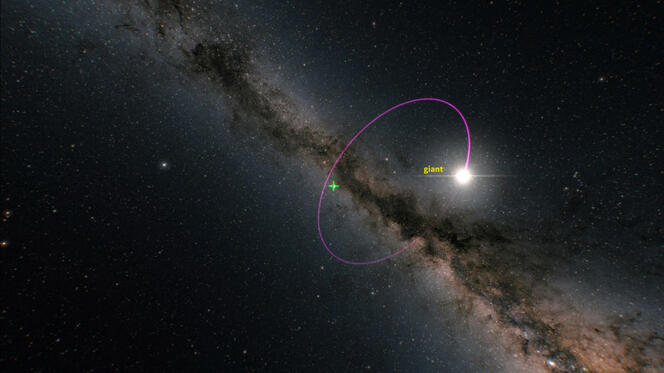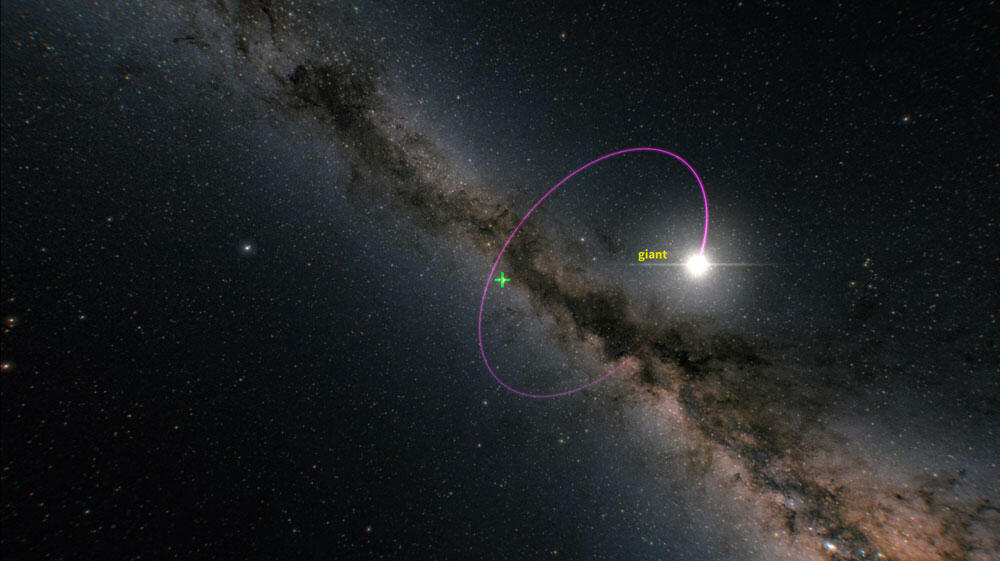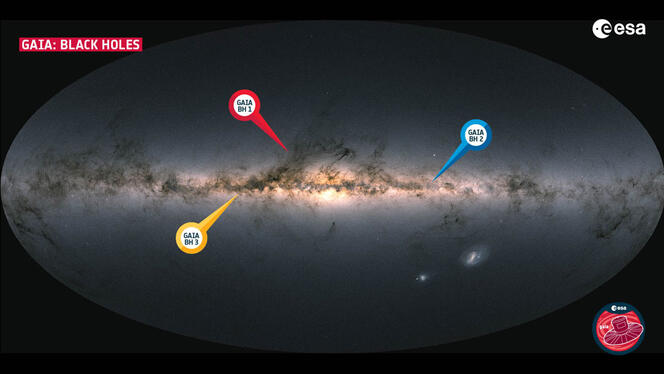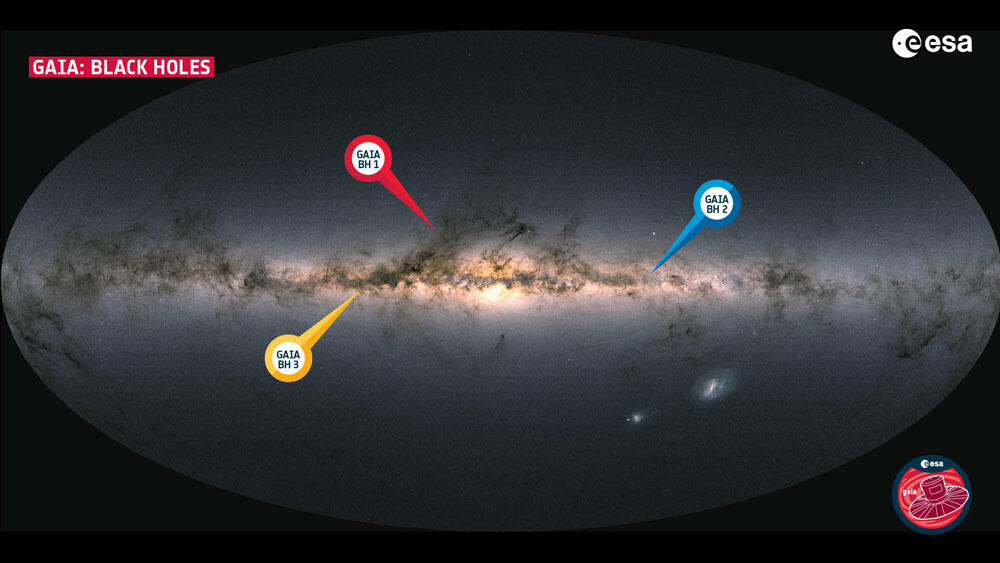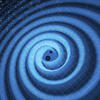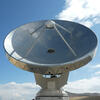You are here
Gaia BH3, the black hole that shouldn't exist
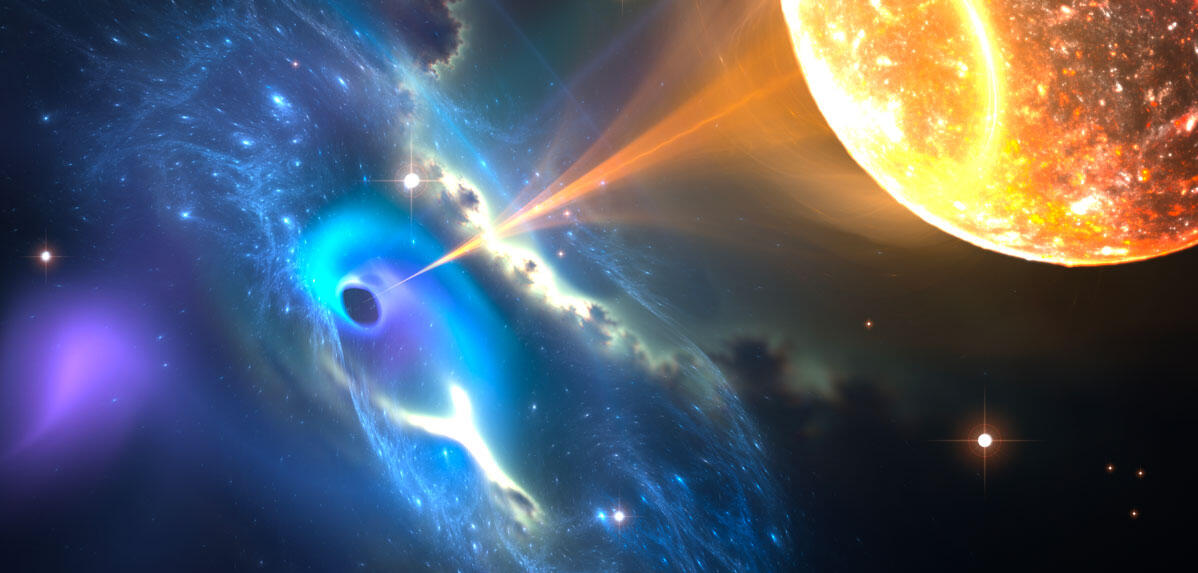
Up until now, the Gaia space observatory has been used to observe the position and motion of stars, uncover the underlying structures of our Galaxy, and find new exoplanets. Occasionally, it also detects black holes. Only two of these compact bodies had so far been discovered using astrometry data, both of them in 2022, but they have now been joined by a third object that is the subject of a publication in the journal Astronomy & Astrophysics.
A binary system 2,000 light-years away
The binary system, consisting of a black hole (dubbed Gaia BH3) and a very metal-poor (and therefore very old) star, is located 2,000 light-years from Earth, in the galactic halo. Astonishingly, the mass of Gaia BH3 is 33 times that of the Sun. "This is the most massive stellar black hole ever discovered in the Milky Way," says Pasquale Panuzzo1, deputy head of spectroscopic data for the Gaia collaboration. "It’s the first time a black hole of this size has ever been observed, with the exception of those detected in distant galaxies by the LIGO-Virgo gravitational observatories."
Gaia cannot directly spot black holes, which emit no light. However, it can measure the distances of stars and their motion through space, which means that it can also notice small disturbances in their paths. "Such disturbances enable us to determine whether a star is single or has a companion," explains Frédéric Arenou2, of the Gaia collaboration, who analyses binary stars. "We believe that half the stars in our Galaxy are part of a binary or multiple system." Usually, all the collected data is published at once, when a new Gaia catalogue is issued. The latest one, DR3, was released in June 2022, while the next isn't due until late 2025. However, this time the scientists made an exception in view of the importance of the discovery.
Variations in the position and radial velocity of a star located in the Aquila constellation revealed the presence of another extremely massive object emitting no light, the black hole Gaia BH3. The two bodies perform an intricate dance around each other, with each orbit lasting a little over eleven years. In that time, the star's eccentric orbit takes it, at its closest, to within roughly 4.5 astronomical units from the black hole, the distance of Jupiter from the Sun, while at its furthest point the distance between the two is 29 astronomical units, equivalent to the orbit of Neptune.
A black hole that is far too massive
Gaia BH3 is unusual in that it is a dormant black hole. It is too far from its star to be able to rip material away from it, which would show up as an emission of X-rays and have enabled it to be directly detected earlier.
In any case, thanks to data from Gaia, it proved possible to determine the black hole's mass with a high degree of precision. And there turned out to be some surprises in store. "We didn't think that stellar black holes of that size could exist," Panuzzo says. "According to the models, they cannot exceed about 20 solar masses." Unlike supermassive black holes such as SgrA*, which are located at the centre of galaxies and whose origin is still unknown, a black hole of this kind is thought to result from the collapse of a massive star. However, it is known that, as these so-called progenitor stars evolve, they expel a large amount of their matter as stellar winds, which should normally place an upper limit on the final maximum mass of the black holes resulting from their collapse. Weighing in at 33 solar masses, Gaia BH3 easily beats the previous record held by Cyg X-1, whose mass is “only” 20 times that of the Sun. So how on earth did it come into existence?
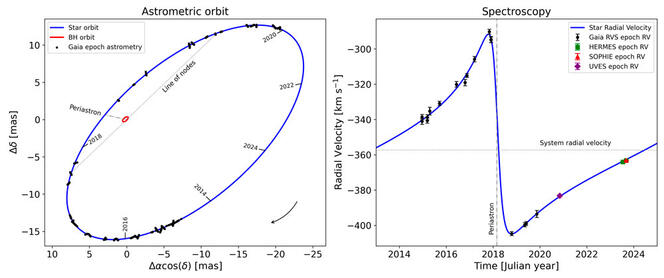

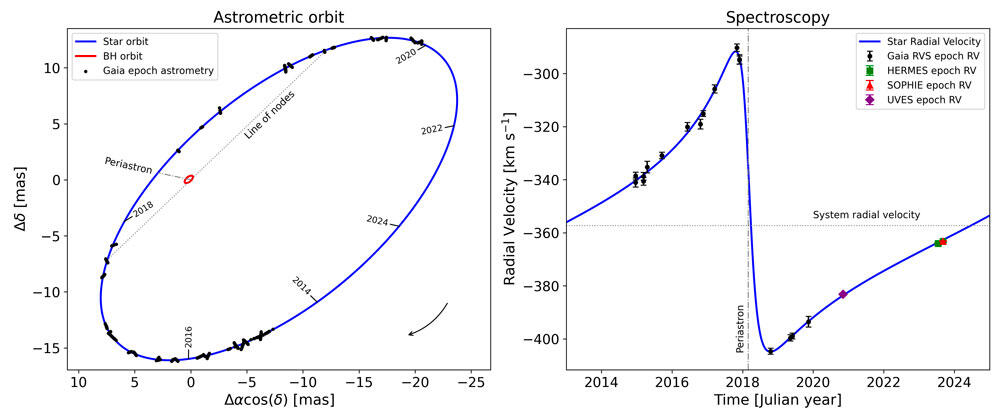
One explanation may have to do with the composition of Gaia BH3's progenitor star. Researchers believe that metal-poor stars (i.e. depleted in elements heavier than hydrogen and helium), which emerged very early in the history of the Universe, tend to form black holes that are far more massive than those produced by more recently born celestial bodies like the Sun, which are relatively metal-rich. It turns out that Gaia BH3's companion star is also very metal-poor, and probably similar to the one that gave rise to the black hole. "A great deal of evidence points to this conclusion," the scientist explains. "For the first time, we have confirmation that these massive black holes, already observed by gravitational wave observatories, were formed from metal-poor stars."
A cosmic unicorn?
But can the hypothesis that Gaia BH3 is actually the result of a merger between two smaller black holes be totally ruled out? The LIGO-Virgo-KAGRA gravitational wave observatories have in fact detected several such events since 2015, involving mergers of considerably more massive black holes in distant galaxies. "It's possible, but unlikely," Panuzzo admits. "We can't say for sure, but several pieces of evidence indicate that this black hole really was produced by the collapse of a single massive star." The main clue is the existence of the metal-poor companion star. Bodies of this kind, which date from an earlier generation than our own Sun, only make up around 1% of the stars in the Milky Way.
And as if that weren't enough, Gaia's observations have also revealed another phenomenon, namely that Gaia BH3 and its companion are orbiting in the opposite direction to the other stars in the galactic disc. In fact, the duo belong to a structure recently discovered by Gaia named ED-2, which appears to have emerged from the remains of a globular cluster captured and then torn apart by our Galaxy. "It really is a unicorn! It's unlike anything we've ever seen before," the researcher exclaims. "We were lucky to find it." Thanks to Gaia, scientists can now study such black holes, which are extremely hard to find in the Milky Way. "The beauty of this data is that it's robust," Arenou points out. "We wanted to publish these findings rapidly so that the scientific community could make use of them, because we're absolutely sure that this orbit is correct!"
Moreover, since Gaia BH3 is relatively close to Earth, it should be possible to directly observe its occasional bursts of activity with X-ray and radio telescopes. "The other advantage is that unlike coalescing black holes detected through gravitational waves, here we have an object that we can track over the long term with the aim of understanding its origin. We’re extremely lucky to have access to this black hole," Arenou adds. The ball is now in the court of the theorists, who will be able to compare this discovery with their models and thus better understand how such massive stellar black holes form. ♦
Find out more on our website:
Gaia : le catalogue galactique nouveau est arrivé (Gaia : publication of the latest galactic catalogue) (in French)
Les plus vieilles galaxies jamais confirmées (The oldest galaxies ever observed) (in French)


